The silk of Assam is often celebrated, but the state’s textile legacy extends far beyond Muga and Eri. Cotton, too, has long had a place in Assamese homes — just not often in their wardrobes. Its thickness made it bulky, better suited for household use than contemporary fashion. But for Assam-based designer Anushka Das, founder of Anushka Annasuya and Kalpavriksh Design, that challenge was an opportunity.
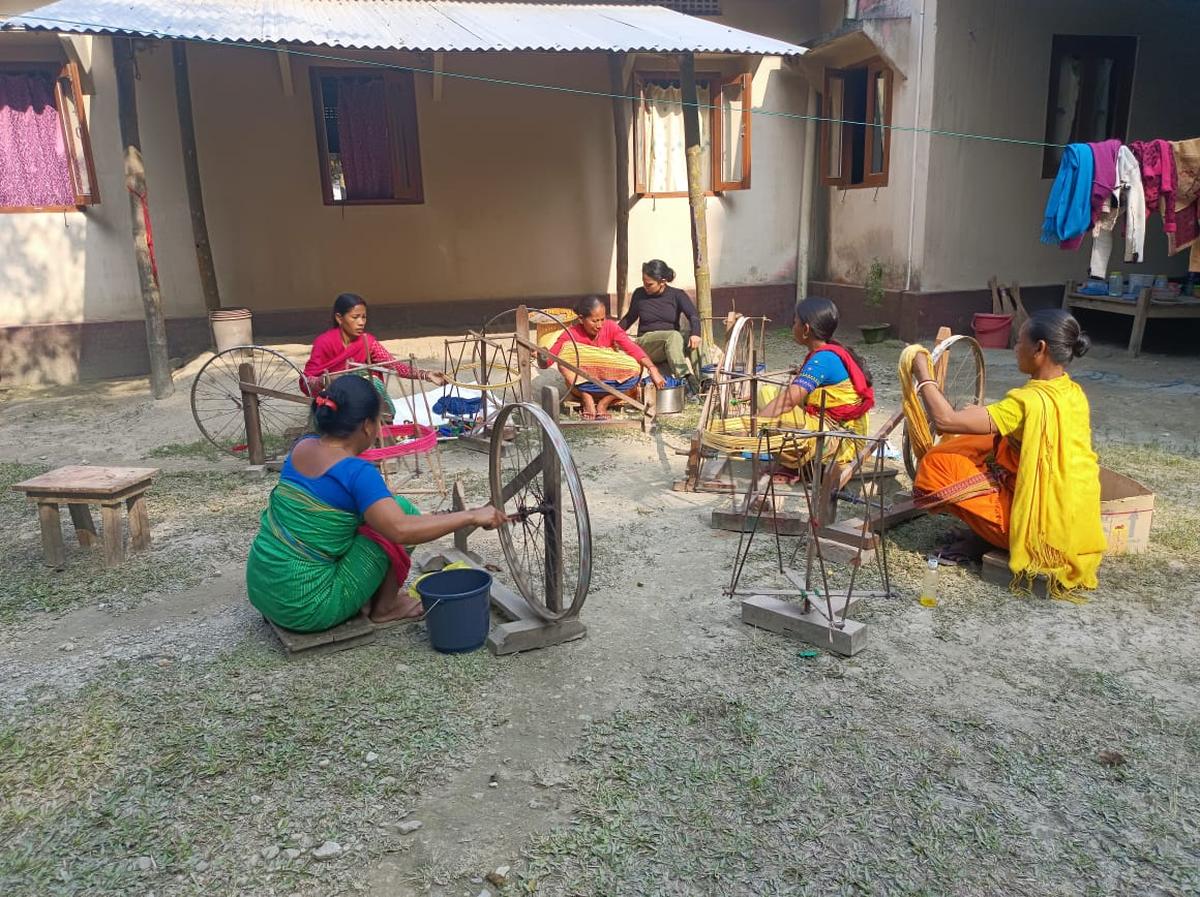
Traditional weavers of Assam
| Photo Credit:
Special Arrangement
She set out to develop a lighter, finer version of Assam textile((traditional hand woven Assam cotton is thick and rough) — a textile that tells stories of the state’s culture, flora, and fauna through its motifs. Working closely with the women weavers of Aagor Society in Chirang district since late 2022, Anushka has been helping produce dress materials and home linen that merge Assamese craft with modern usability. Aagor currently runs 30 looms and collaborates with women across Chirang, Kokrajhar, and Udalguri. “We’ve also begun working with the women weavers of Tezpur Mahila Samity, a co-operative set up in 1947,” she adds.
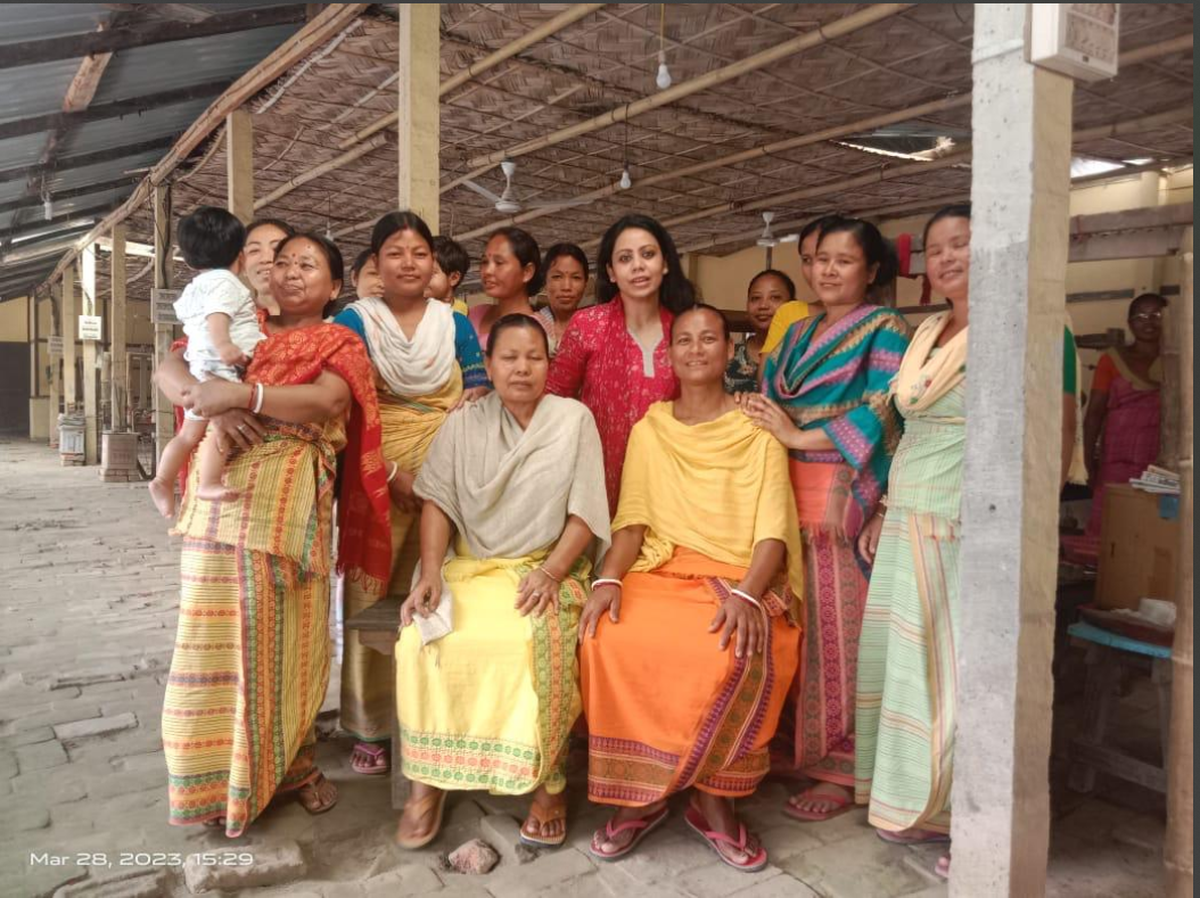
Anushka Das with community of Bodo weavers
| Photo Credit:
Special Arrangement
What sets Assam cotton apart is its strength, colour fastness, and soft, fluid texture. Anushka’s process combines traditional Assamese weaving with Salem cotton yarns — Azo-free (synthetic or natural colourants that do not contain harmful azo compounds and colourfast)— creating a sustainable, chemical-free textile that retains the intricate extra-weft motifs the region is known for. “The chemical-free nature ensures safety for both artisans and wearers,” she explains. “Reliable colourfastness means the fabrics don’t bleed during washing, which is vital for preserving detailed motifs.”
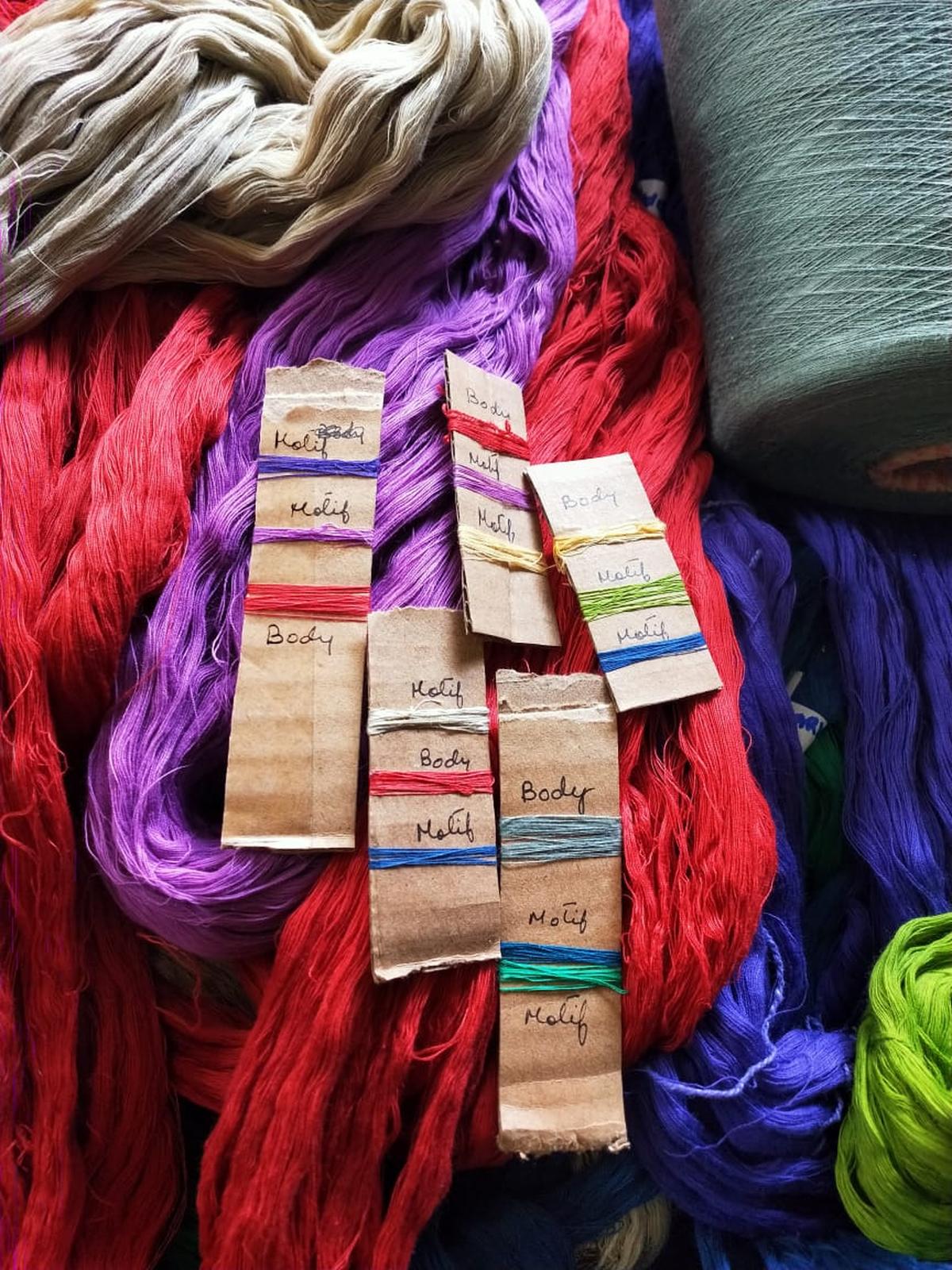
Colour palate and story planning with the weavers
| Photo Credit:
Special Arrangement
Her design vocabulary draws from the state’s dual traditions. “Assamese weaving is known for its soft cream or white base enlivened with extra-weft motifs — creepers, birds, rhinos, the jaapi — arranged with restraint to create a subtle yet dignified aesthetic,” says Anushka. “In contrast, the Bodo tribe contributes a more geometric vocabulary, with motifs like dinghkiya bibar (fern), kasau bikha (turtle’s shell), and phareo megon (pigeon’s eye), woven in bold reds, yellows, and greens.”
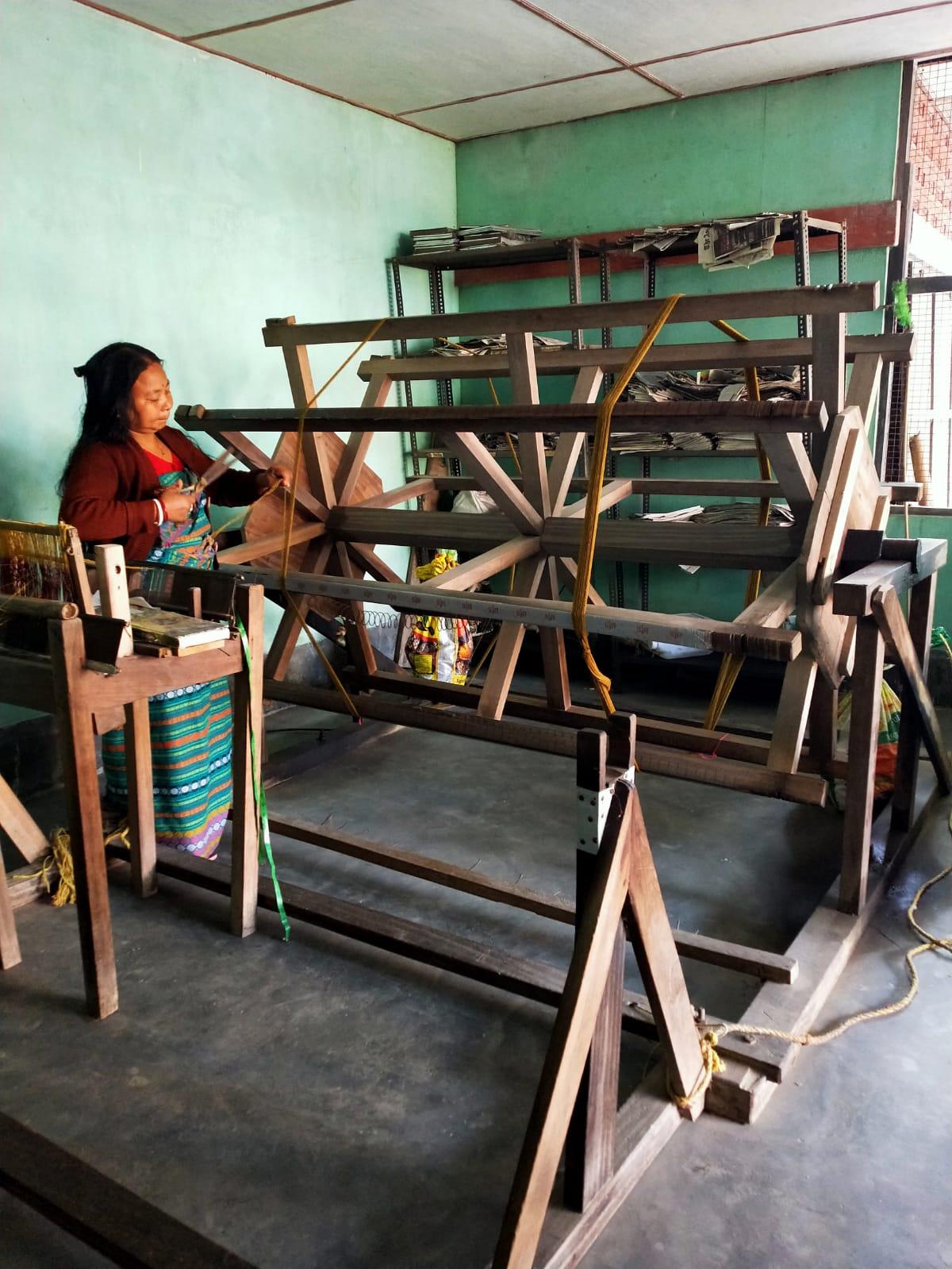
A loom set up in Chirang
| Photo Credit:
Special Arrangement
For home decor, the thread count ranges from 20s to 40s; for garments, it goes up to 120s, allowing for lighter, more refined fabrics. This nuanced understanding of design comes from Anushka’s 18 years in the textile and fashion industry. She began her career with Neeru Kumar and Ritu Kumar, leading design collections for both domestic and international clients before launching her own label in 2011.
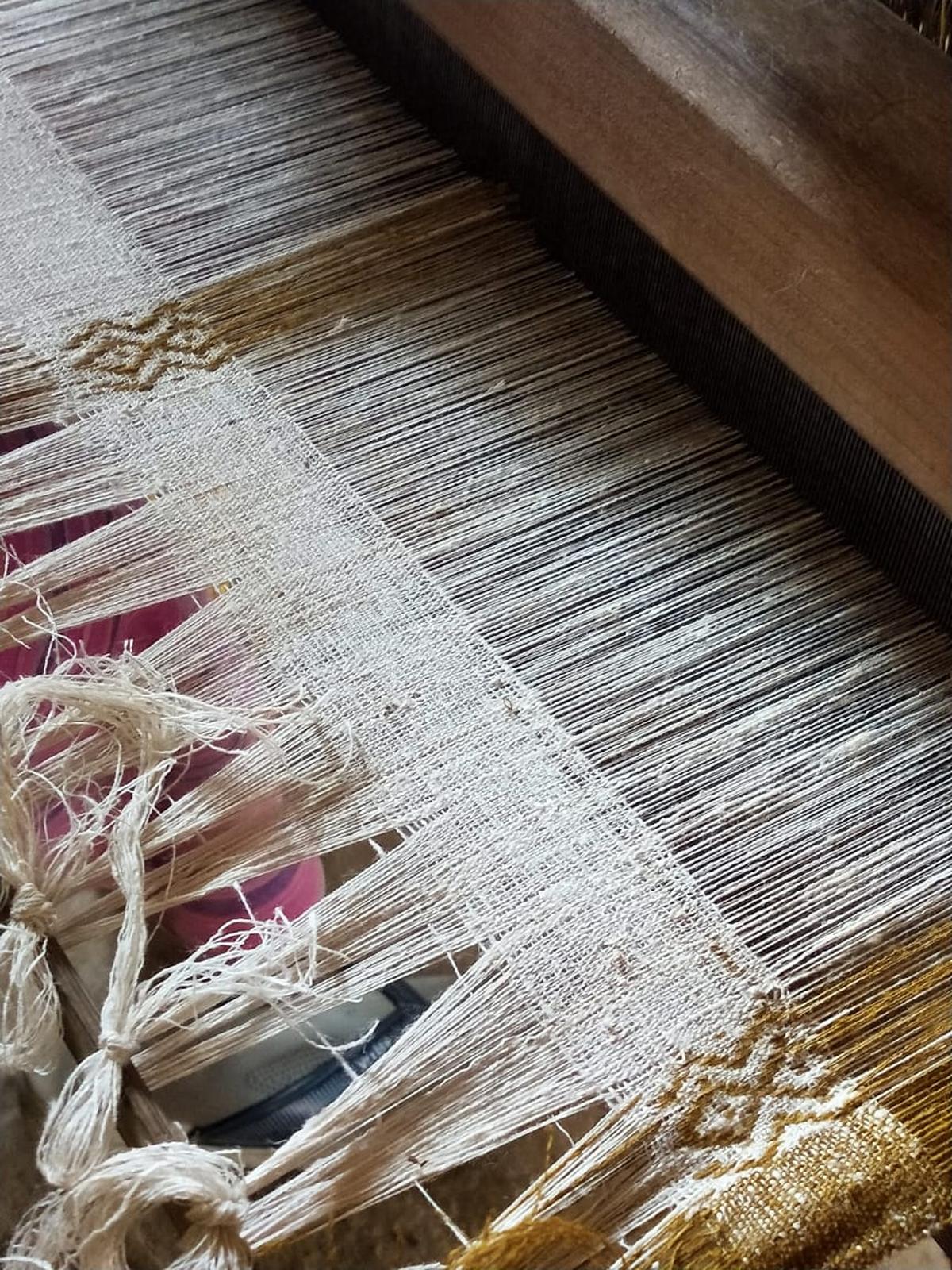
Eri stole
Her connection to Aagor goes back to 2004, when as a student at NIFT Delhi she first visited the weaving cluster for a craft sensitisation project. That experience stayed with her. “Relocating after 21 years has taught me to appreciate diversity,” she reflects. “Working with the weaving belts of the Northeast and taking responsibility for their livelihoods has now become my greatest responsibility.” She credits Aagor’s production manager Phungka Daimari and head weaver Sushila Basumatari for their partnership in this ongoing revival.
Comparing Assam cotton with other Indian varieties, Anushka explains, “Assam cotton is soft, fine, and fluid, often handspun with slight slubs that give it a natural, almost silky texture. Gujarat’s khadi is heavier and more rustic, Bengal’s tant has crisp starchiness, and Tamil Nadu’s kora cottons are stiff.”
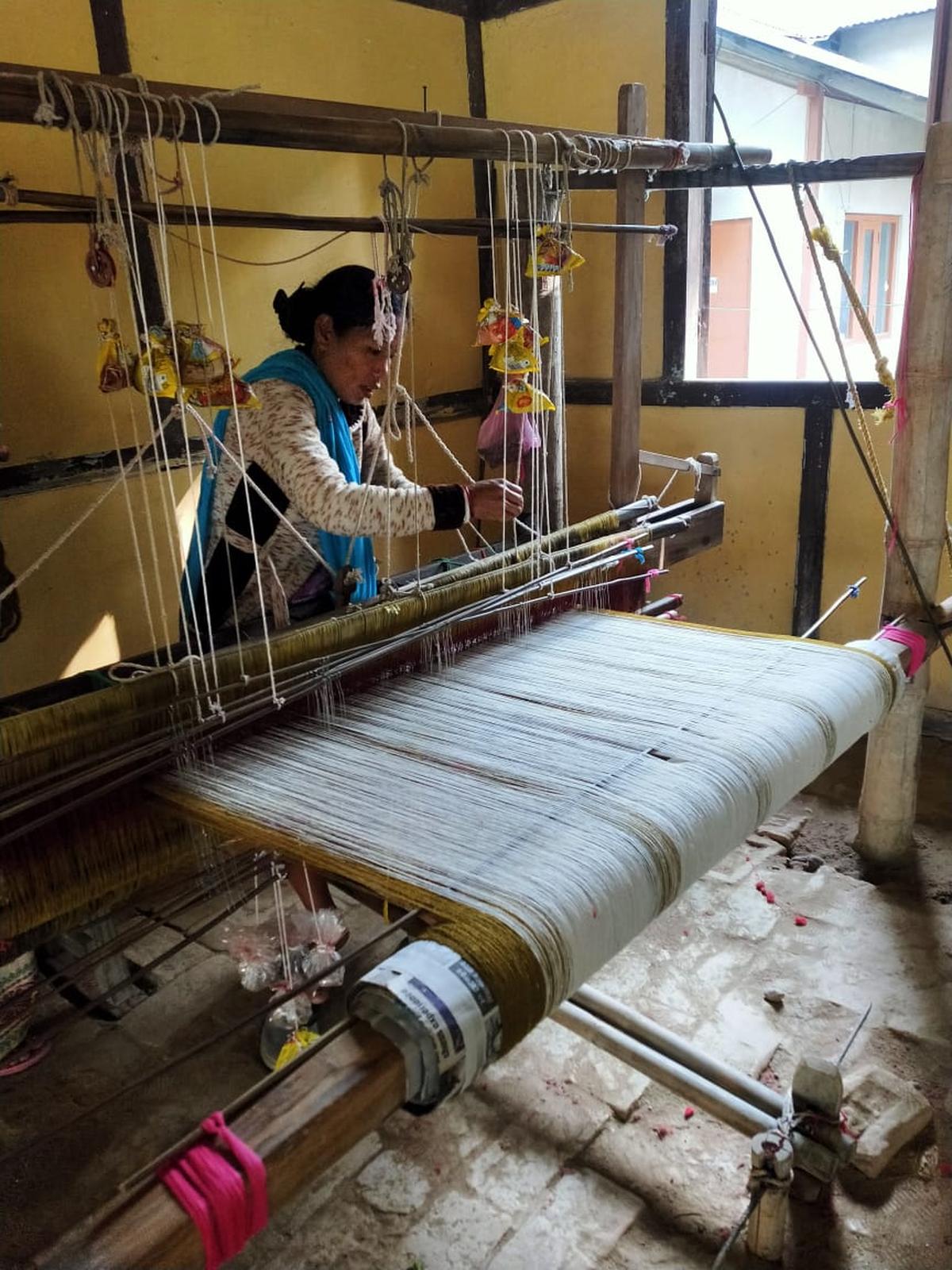
A weaver at work
The looms themselves also shape the fabric’s identity. Assamese looms, typically made of bamboo and wood, are lightweight and raised above the ground — ideal for the state’s humid, flood-prone climate. Designed for plain weaves with extra-weft insertions, they allow weavers to hand-pick motifs, giving Assam cotton its delicate patterns and signature drape. But because they’re small, productivity remains limited compared to pit or frame looms in Bengal or South India.
Through this delicate balance of craft, design, and innovation, Anushka hopes to return Assam cotton to everyday wardrobes— without compromising its cultural essence. “With its linguistic and cultural distinctiveness, Assam’s cotton weaving tradition reflects the heritage of its people and their connection to the land,” she says. “These textiles are more than garments, they’re living tapestries, symbols of resilience and artistry.”
Published – October 10, 2025 04:07 pm IST

